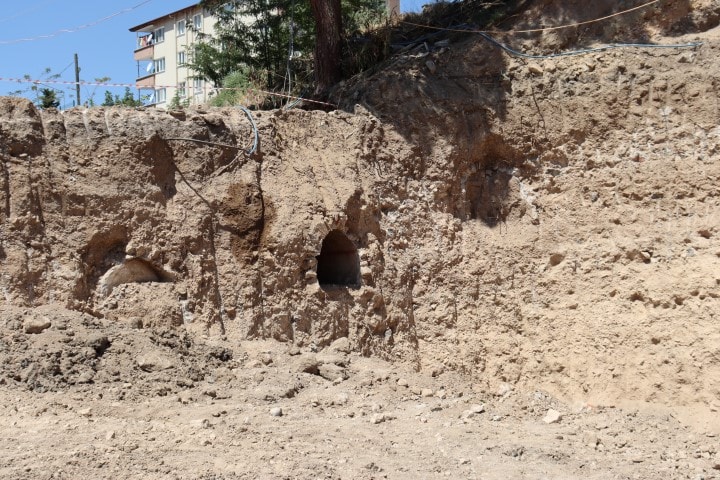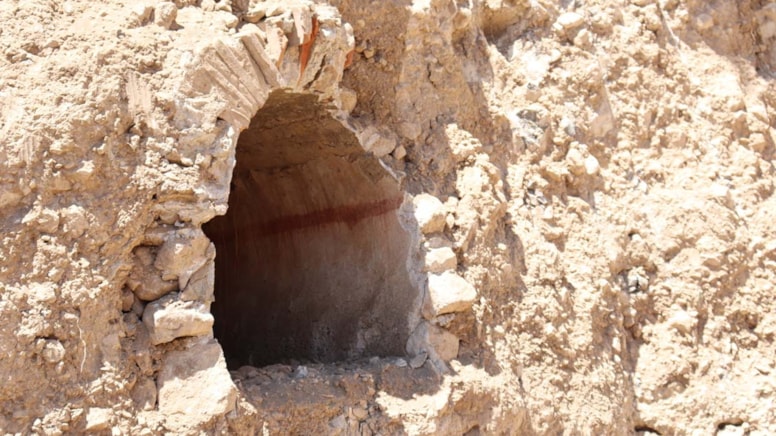
3 Roman tombs found during foundation excavation
During the excavation of the foundation of a building construction, 3 graves belonging to the Roman period were found. It was determined that one of the graves was a family grave.
While the tombs were damaged, the works were stopped.
Roman tombs have been unearthed in the Hızır Paşa neighborhood of Amasya province in northeastern Türkiye.
“We estimate that the tombs are 2 thousand years old belonging to the Roman Period,” said Lecturer Hüseyin Onur Erdem, Head of the Department of Architecture and Urban Planning at Amasya University, who examined the tombs.
📣 Our WhatsApp channel is now LIVE! Stay up-to-date with the latest news and updates, just click here to follow us on WhatsApp and never miss a thing!!

Hüseyin Onur Erdem said, “The white lime plaster and whitewash inside the vaulted tombs we see here, as well as the ribbon decorations made in red with ochre paint, show us that the tombs were probably built in the 2nd and 3rd centuries AD. Since the excavations of the construction foundations were carried out with diggers and excavators, it is difficult to identify the tombs because they were destroyed.
Considering that they are sensitive and 2 thousand years old tombs, it becomes a little easier to be destroyed. It is seen that one of these tombs has a wider width than the others. As we know from previous rescue excavations in Amasya, we know that vaulted tombs, especially those with a width of over 120 centimeters, were used as family tombs.”

Stating that such tombs were found in archaeological excavations in Amasya, Erdem said, “We see that one of those tombs is here. It is also useful to add this. We see that there is a code difference in 3 different tombs here.

In other words, as it is today, this place was a slope at that time and they built these tombs in accordance with the slope. Of course, we see that these tombs are under the ground now, but in that period, these tombs were not under the ground, they were tombs that could be seen from the face of the soil, and people could go and visit them.”
You may also like
- A 1700-year-old statue of Pan unearthed during the excavations at Polyeuktos in İstanbul
- The granary was found in the ancient city of Sebaste, founded by the first Roman emperor Augustus
- Donalar Kale Kapı Rock Tomb or Donalar Rock Tomb
- Theater emerges as works continue in ancient city of Perinthos
- Urartian King Argishti’s bronze shield revealed the name of an unknown country
- The religious center of Lycia, the ancient city of Letoon
- Who were the Luwians?
- A new study brings a fresh perspective on the Anatolian origin of the Indo-European languages
- Perhaps the oldest thermal treatment center in the world, which has been in continuous use for 2000 years -Basilica Therma Roman Bath or King’s Daughter-
- The largest synagogue of the ancient world, located in the ancient city of Sardis, is being restored











Leave a Reply